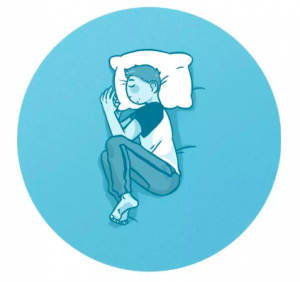Pregnancy is a roller coaster of changes to the body and as a result of these changes, pregnant women are more likely to experience aches and pains in their sacroiliac joints, hips and pubic symphysis. These changes are a result of the increase in hormones so that the woman’s body can move and adapt to the growing baby. Additionally, the overall center of gravity in the woman’s body shifts and can cause tension and stress. These aches and pelvic pains are very commonly treated in our office. In fact, it is so common that 80 percent of pregnant women experience pelvic pain during pregnancy. Our goal is to help minimize the pain and discomfort that can be experienced as well as provide strategies to prevent the recurrence of the pain. There are multiple techniques to help prevent and minimize pain in the pelvis throughout your pregnancy.
What is the pelvis?
The pelvis is an oval structure that comprises three pairs of bones and two major joints. The six bones making up the pelvis are the two ischium, two ilium and two pubic bones and the two joints are the sacroiliac joints (SI joint) and the pubic symphysis. The purpose of these bony structures and joints is to allow for an appropriate transfer of force from your legs to your abdomen and vice versa.
The pelvis also provides an anchoring point for the spinal column and creates a bowl to hold and support all of the pelvic organs. This is made possible by the ligamentous and tendinous structures. The ligamentous structures provide a joining point for the joints we mentioned previously the SI joint and the pubic symphysis. The SI joint is a very strong joint that allows for movement at the posterior (or back) aspect of the pelvic girdle. The pubic symphysis is another very strong joint that provides stabilization and slight motion at the anterior (front) aspect of the pelvic girdle. In order to have appropriate movement in day-to-day activities, it’s important to keep both of these joints healthy.
What is the SI joint?
The sacroiliac joint (SI) joins the sacrum to the pelvis, more specifically – the sacrum and the ilium. This joint allows for transfer of weight and forces from the lower body to the upper body. It also assists in bending over to touch your toes or any other kind of hinging motion. Learn more from Dr. Mati in the video below:
What is the Pubic Symphysis?
The pubic symphysis is found in the anterior aspect of the pelvis and is the joint between both pubic bones. This joint is connected by a very strong tissue called fibrocartilaginous tissue and is in the shape of a disc. This tissue makes this joint fairly immoveable and very strong to be able to transfer forces throughout the pelvis and helps facilitate appropriate biomechanics of the body.
A common mimicker of pain in the pelvic region is round ligament pain. This pain can be felt along the side of the abdomen or into the pelvis region. Round ligament pain is usually brought on by a variety of things such as rolling over in bed, activity or a change in the biomechanics of the SI joint or pubic symphysis.
Why am I having SI joint and pelvic pain throughout my pregnancy?
- Increased load: Your growing baby takes up more space in your pelvis in preparation for birth and adds pressure and stress on the joints, muscles, and organs in your pelvis and back.
- Hormones: Relaxin and Progesterone are greatly increased during pregnancy to help your body’s ligaments to loosen and become more flexible. This helps create space for the baby to move through, but can also lead to pain or injury.
- Limitations that cause postural changes: For example, the changes in the way you sit, stand, walk, and even sleep can increase the stress on your body.
- Less movement due to pain or discomfort during pregnancy can also lead to stiff joints.
How can I alleviate my pelvic pain?
- Chiropractic Care: adjustments and diversified techniques are a great option for relieving pregnancy-related pelvic pain. The Webster Technique is a chiropractic adjustment technique specifically tailored to pregnant women to reduce nervous system stress, balance pelvic muscles and ligaments. This works to optimize the mother’s pelvic function in pregnancy and birth and increase the chance for a safer, easier birth as a result of improved neuro-biomechanical function. Our chiropractors will also offer lifestyle suggestions to implement in your everyday life in order to improve posture and establish pelvic balance throughout pregnancy.
- Posture during pregnancy can make a great difference in your comfort and avoiding unnecessary pain. Be sure you’re sitting and standing up properly to help avoid unnecessary pain. At night, a pregnancy pillow may also help get into a comfortable sleeping position.
- Lacrosse ball rolling can be done sitting or standing and can provide relief for low back and pelvic pain during pregnancy.
- Other Exercises and Stretches can also help avoid and relieve pelvic and pregnancy-related tension and pain.
Interested in learning more? Check out our previous blog for more tips on a healthy pregnancy. And for your custom treatment plan, be sure to schedule an appointment with one of our prenatal chiropractors or massage therapists today to help you feel your best throughout your pregnancy journey.







